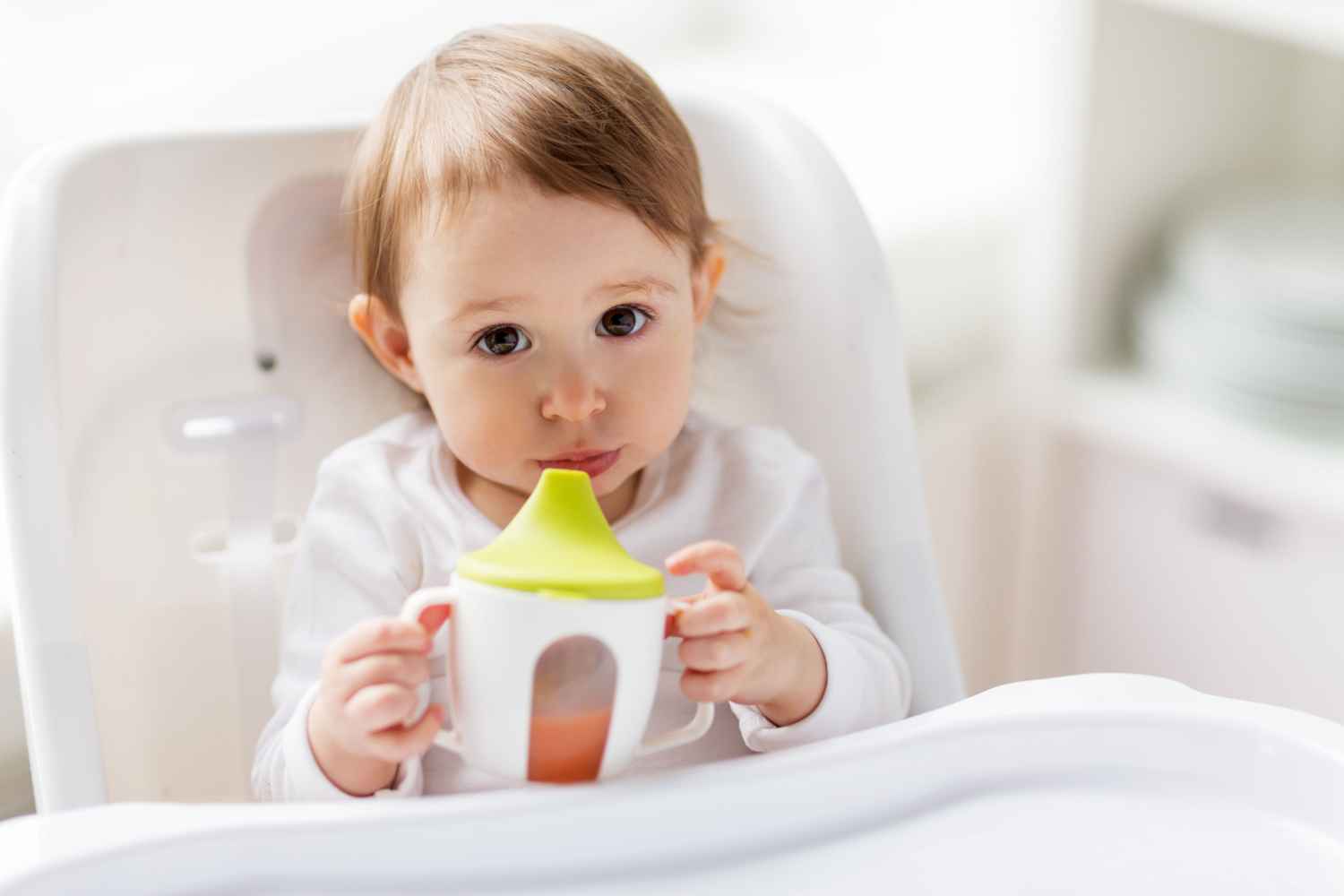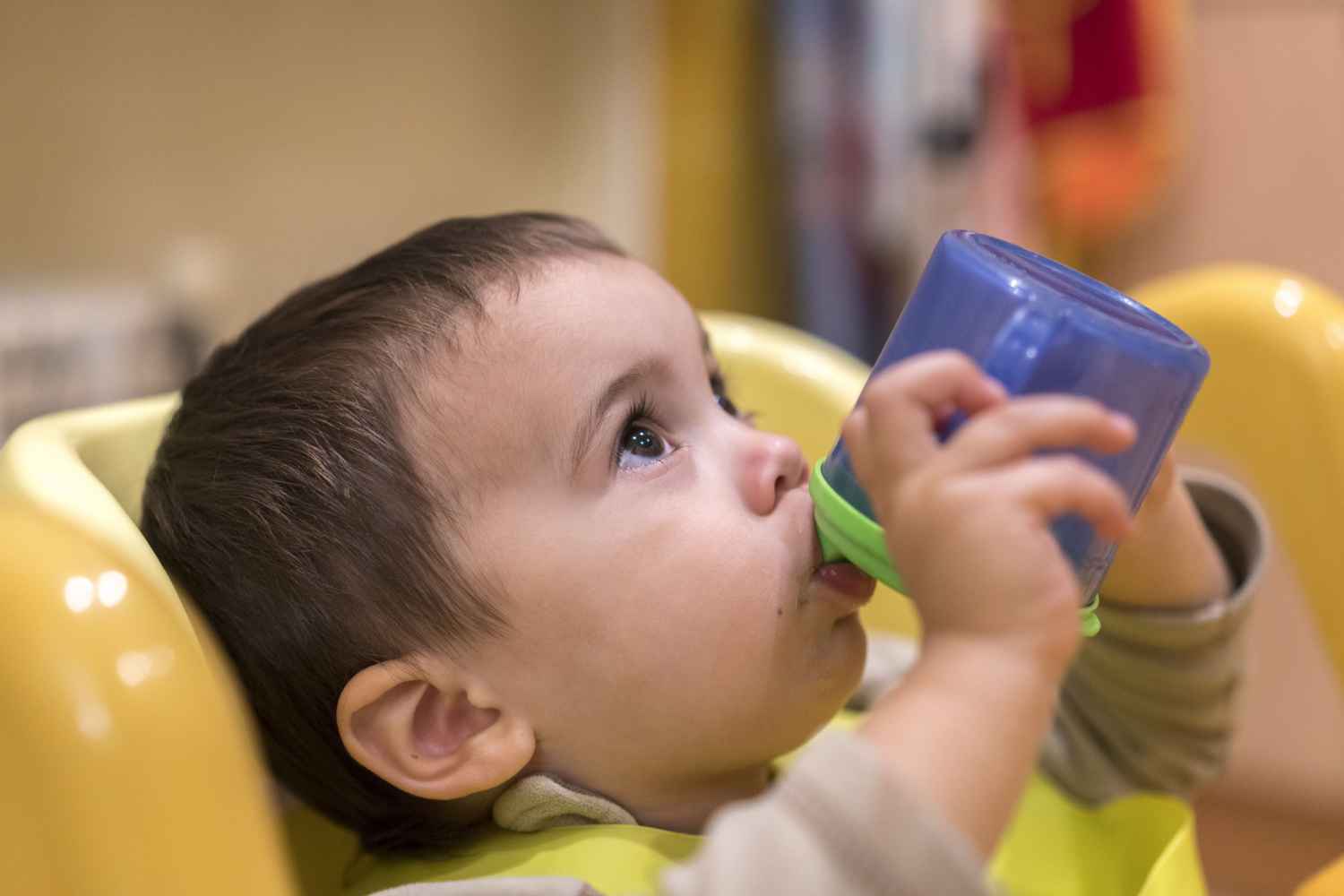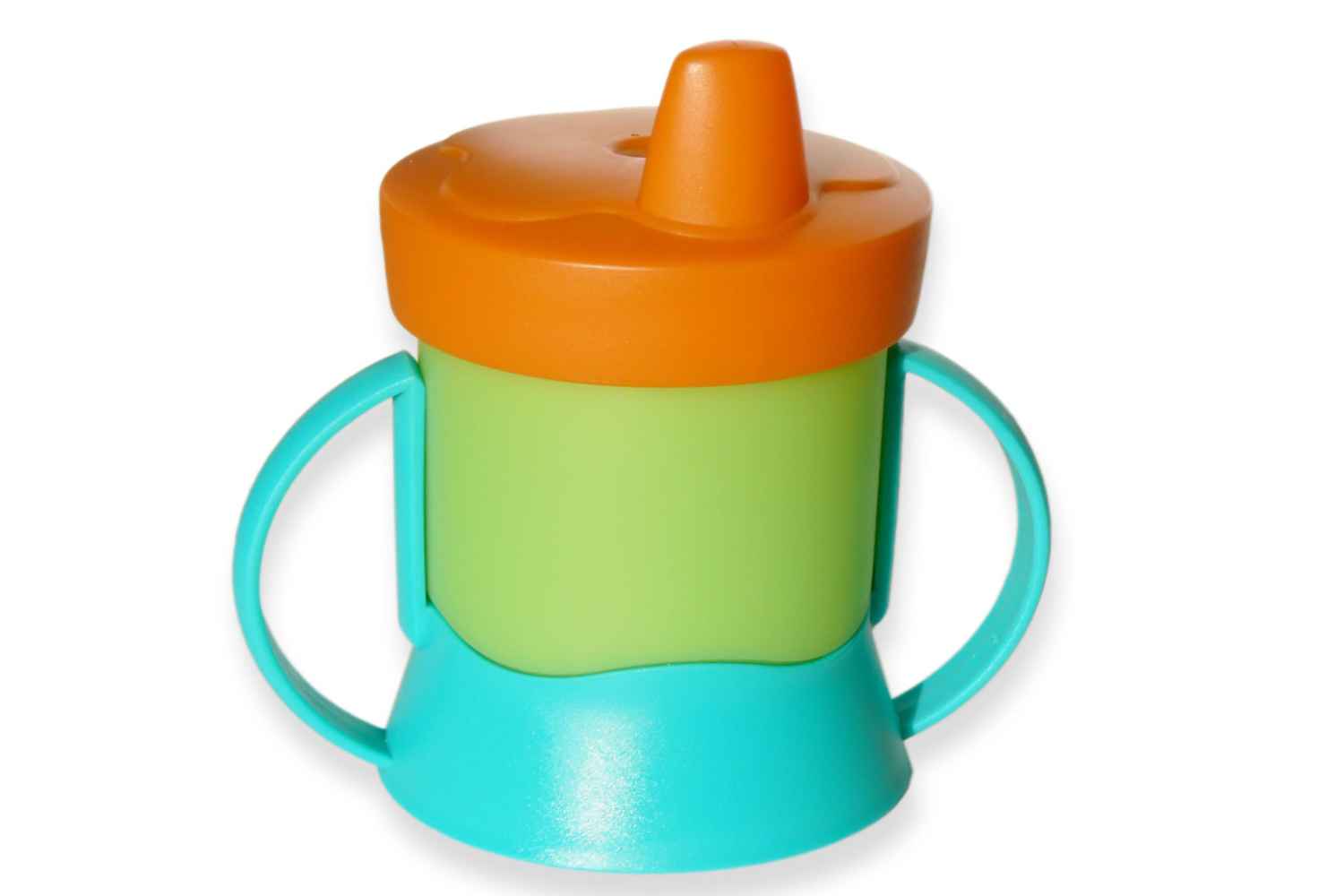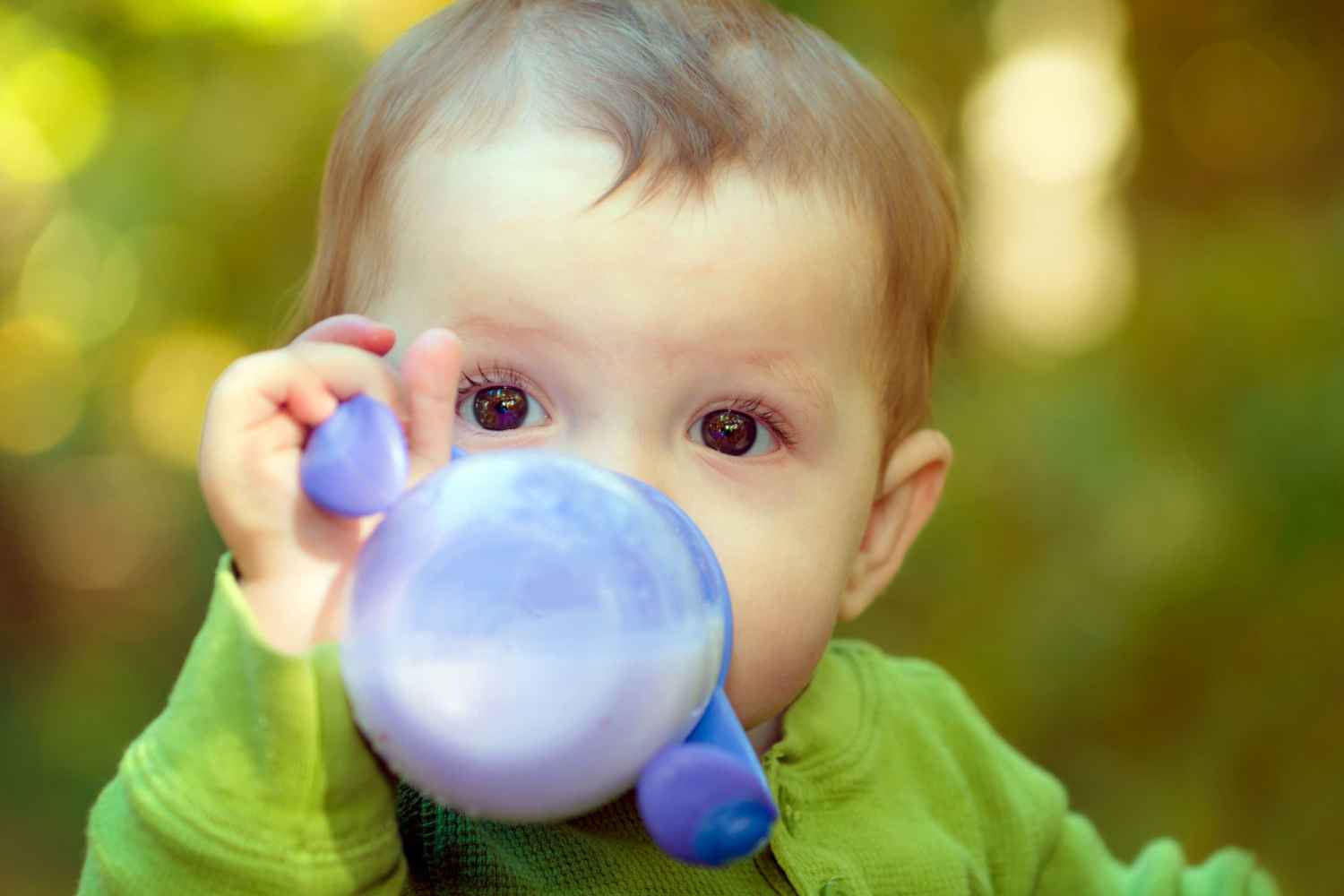
Sippy cups are instrumental in transitioning your baby from a container or nursing to drinking from a cup. Babies as young as 6 months old can start sippy cups and this helps with the ultimate transition away from bottles. It is also a very good way of skipping bottles altogether whether you to feed milk or water to your munchkin.
After starting meals at roughly 6 months, start your infant with some water, breast milk, or formula in a cup. Give your little one a sippy cup just at a particular time, maybewith a meal to drink water. Slowly you can start introducing sippy cup for all meals of the day. Sippy cups must be used in moderation for a limited time till your baby is ready to drink from an open cup. Every baby grows at their speed. Once your little one has strong head control, can pick up and hold objects, and sits well in a high chair, the time for a sippy cup may be perfect.
In This Article
- What is a Sippy Cup?
- When Can You Introduce Sippy Cup to Your Baby?
- Ways to Introduce a Sippy Cup to Your Baby
- Advantages of a Sippy Cup For Babies
- Disadvantages of Sippy Cups For Babies
- What is the Solution if Your Baby Does Not Like a Sippy Cup?
- FAQ’s
What is a Sippy Cup?
Sippy cups are learning cups with screw-on or snap-on lids with a spout or straw to prevent spillage. There are versions with and without handles and various sorts of spouts.
Sippy mugs can be an excellent method to transfer your infant from breastfeeding or bottle-feeding to a standard cup which helps in hand-eye coordination activities. Once your baby has the motor abilities to handle a glass but isn’t yet old enough to keep the fluid from dropping, a sippy cup can provide some independence while minimizing clean-up.
When Can You Introduce Sippy Cup to Your Baby?

When your baby is six months old and starting solid meals, you can offer him or her a sippy cup. Being able to sit straight, having strong neck coordination, and showing interest in eating are all signs that your baby is developmentally ready for a sippy cup.
If your baby does not use a bottle and looks ready for a sippy cup, you can easily skip the bottle and start a sippy or an open cup for drinking purposes.
[Read : When Do Babies Sit Up Without Support?]
Ways to Introduce a Sippy Cup to Your Baby
With giving your breastfed infant a sippy cup, you have two options.
1. Go Cold Turkey
With this strategy, you will completely stop bottle feeds or not introduce bottles and solely give them sippy cups. They’ll learn in three or four days, although this strategy may cause a lot of weeping during that period. Unless you’re still pumping to put breast milk in a sippy cup, it may cause blocked ducts for you.
2. Weaning Method
If you don’t want every night to be a waking nightmare, gradually reduce nursing sessions or provide them only at bedtime. This will help you both sleep better. It also allows your kid to acclimate to the new feeding approach at a slower, more comfortable pace.
Here few pointers to help your infant to use a sippy mug.
- Begin with one with a soft spout. A soft plastic spout will be more comfortable for your infant than a hard plastic nozzle.
- Demonstrate to your baby how to bring the cup to the lips and tilt it to drink. Touch the tip of the nipple to the roof of the baby’s mouth to activate the sucking and show that the spout is like a nipple.
- Give some time to adjust to the sippy cups and if not, then do not force them and try after some days.
- Look at the market, as there are different sippy cups with various nozzles available. If the first one isn’t working, go to another to check if your baby likes it.
- Begin by providing a sippy mug at one meal each day. The next week, introduce a second meal, and so on till your little one is drinking from a sippy mug at meals.
- Maintain consistency. Don’t go back to the bottle if you’ve begun giving your infant a sippy cup at a certain time (say, at lunch).
- Encourage your baby. Drinking from a sippy cup shows they’re grown now! Celebrate such activities every time to encourage your munchkin.
Advantages of a Sippy Cup For Babies

Here are some tips for using sippy cups for babies.
1. Oral and Speech Development
Your baby may practice using their facial muscles, tongue, and soft palate, all of which are related to speech and feeding, by switching from a bottle to a toddler cup (for any liquids other than those taken straight from the breast).
2. Safe and Effective
Cup feeding prevents jaw abnormal development and tooth misalignment. The synthetic nipples on the bottles are ideal for chewing on, making them safer and contributing to a decrease in dental caries.
3. Prevents Overfeeding
When feeding a baby, you must bring the cup to his lips, tilt it until the milk hits the lip, and then allow the child to lap it into his mouth using his tongue. In contrast to bottle feeding, which pours milk into the mouth, using a sippy cup prevents overfeeding. Babies can better control their intake, eat only what they need, and avoid force-feeding thanks to this. Some feeding cups are graded as well, allowing you to measure the precise amount of milk you wish to feed your baby.
4. Easy Maintanance
Cups are simple to keep, transport, and clean. They are more affordable when compared to bottles and require lesser steps to sterilize and keep clean.
Disadvantages of Sippy Cups For Babies

Cup-feeding a baby has downsides as well; learn about them before starting cup-feed to your kid.
1. Delayed Swallowing Skills
Some pediatricians believe that drinking from a sippy cup is similar to drinking from a bottle since due to the presence of spout. This may result in a delayed mature swallowing causing babies to learn swallowing in a delayed manner. This may also influence the feeding patterns as the baby grows.
2. Tongue Thrust
Prolonged use of sippy cups can cause the baby to develop a tongue thrust due to the specific position of the tongue when drinking. This positioning of the tongue can also cause the front teeth of the baby to grow outward.
3. Altered Speech
Tongue thrust and the forward positioning of the front teeth can cause the baby to develop altered speech patterns such as lisping.
4. Dental Issues
The drinking pattern through a sippy cup can cause sugars to be deposited on the teeth, especially if the baby is drinking milk out of the cup. This can cause dental cavities, caries and tooth decays
[Read : 12 Useful Ways You Can Prevent Baby Bottle Tooth Decay]
What is the Solution if Your Baby Does Not Like a Sippy Cup?
If your child refuses to use a sippy, here are several alternatives:
- Immerse the nozzle into breast milk or formula before feeding your infant.
- Change midway through a feeding. Give them half of their formula or breast milk in the bottle and switch to the sippy cup for the second part of the feeding when it feels empty.
- Change the sippy mug. Some kinds of cups contain valves for preventing spillage and drinking from them is difficult, try removing the flow control valve if your infant sucks from the sippy mug.
- Experiment with different beverages. Some babies may have water from a sippy cup but refuse to swallow a mother’s milk or formula.
Sippy cup for babies can assist easy transition from a bottle to a conventional open cup, but do not use it for an extended period. Do not allow sippy cup to be your baby’s source of comfort. Be patient and gentle with your youngster if he or she is reluctant to change.
FAQ’s
1. Is a Sippy Cup or Straw Better?
Sippy cups are an excellent transitional aid, making them ideal for the initial months of teaching a baby to drink on their own from a cup. Once a baby learns how to drink, you can introduce a straw or an open cup, which may be useful when you’re out. The aim should be to transition to an open cup (read more about it here) to ensure your child’s mouth, tongue, and face muscles grow properly, but sippy cups and straw cups have a role in the learning process. A straw cup can aid your child’s oral motor skills, which are required for advanced speaking and eating skills.
2. Is a Sippy Cup Better Than a Bottle?
Both a bottle and a sippy cup have the same primary function, which is to feed your baby or enable it to consume liquids, although a bottle is advised for infants under 9 months old. Sippy cups are more like sipping from a regular cup that won’t spill until she is over 9 months old, and they are more for teaching kids the coordination and motor skills to ultimately use conventional cups.
3. Do Sippy Cups Cause Speech Problems?
Yes, sippy cups can cause speech problems due to the way the spout can influence the movement of the tongue. Drinking using the spout can also cause the front teeth to grow forward causing speech issues such as lisping.
Read Also: When Should Toddler Stop Using Sippy Cup?

